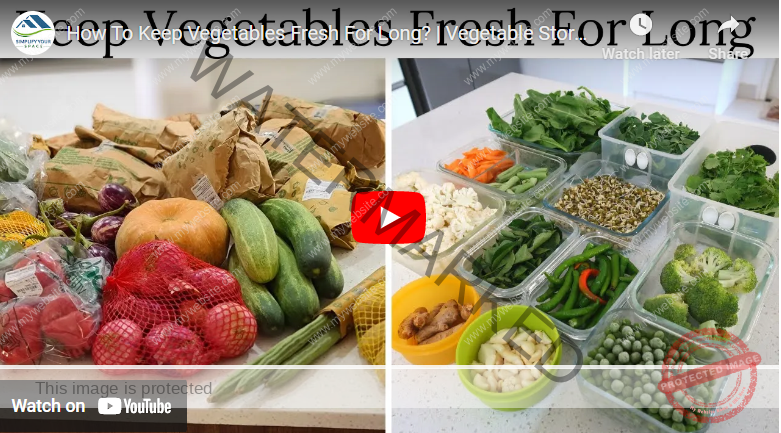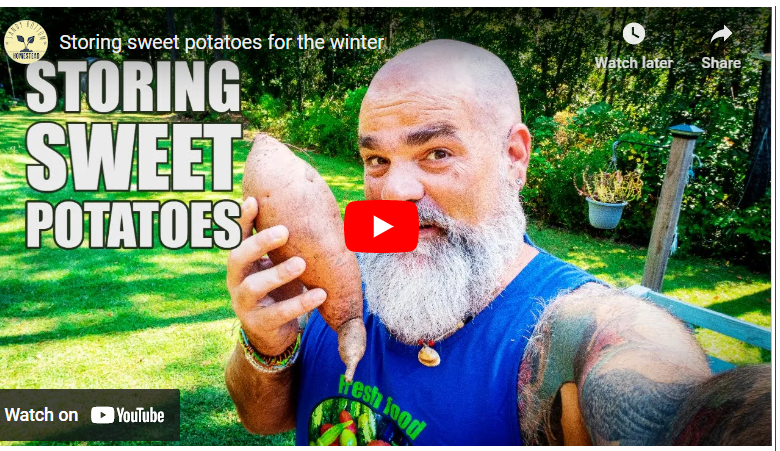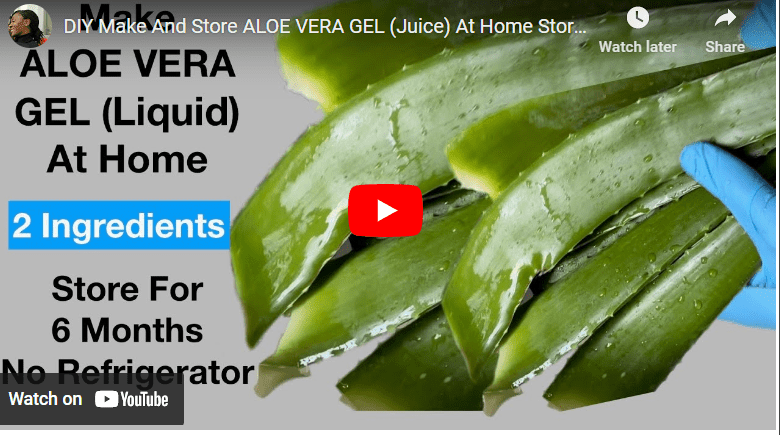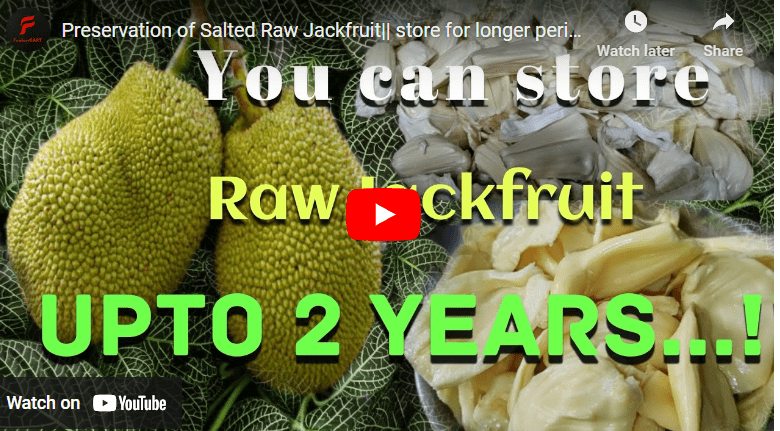Vegetables are an essential part of a healthy diet, providing a variety of vitamins, minerals, and fiber that are crucial for our bodies to function properly. However, the availability of fresh vegetables can be limited or expensive depending on the season and location.
That’s where vegetable preservation comes in handy. By preserving vegetables, we can extend their shelf life, reduce waste, and have access to nutritious produce all year round.
There are several methods of preserving vegetables, including canning, freezing, dehydrating, fermenting, and pickling.
Preserving vegetables for long-term storage requires selecting fresh produce, cleaning it properly, blanching, cooling, and freezing. Start by selecting vegetables that are firm and free of blemishes. Clean them thoroughly and blanch them in boiling water for 2-3 minutes before cooling them in an ice bath.
Finally, spread the vegetables on a baking sheet and freeze them before transferring them to airtight plastic bags or containers. Following these steps will ensure that your vegetables will stay fresh for long-term storage.
How To Preserve Vegetables
To start understanding preservation, it’s important to know that it refers to the methods and techniques used to prevent or delay spoilage of food.
Understanding the factors that cause food spoilage is crucial in determining the appropriate preservation method to use. Some of the factors that contribute to food spoilage include temperature, moisture, oxygen, and microbial growth.
Read Also: How To Preserve Tiger Nut For Long Time Storage
By understanding these factors, you can select the best preservation method for your vegetables and ensure they stay fresh and safe to consume.
Finally, the shelf-life of vegetables varies depending on the type of vegetable, method of preservation, and storage conditions.
There are several methods of preserving vegetables, each with its unique benefits and requirements. Canning, freezing, dehydrating, fermenting, and pickling are the most common methods used to preserve vegetables.
Read Also: How To Preserve Sweet Potatoes For Long Time Storage
Each method has its advantages and disadvantages, and the choice of preservation method depends on the type of vegetable and personal preference. In the next section, we will explore these methods in more detail.
Step 1: Choosing the Right Vegetables
When it comes to preserving vegetables, not all types of vegetables are created equal. Some vegetables are better suited for canning, while others are ideal for freezing, dehydrating, fermenting, or pickling.
Read Also: How To Preserve Scent Leaf For Long Time Storage
Choosing the right vegetables is essential in ensuring a successful preservation process. For canning, vegetables that have a low acidity level, such as green beans, carrots, and peas, are the best choice.
Vegetables that are suitable for freezing include broccoli, cauliflower, and corn, while vegetables like tomatoes, onions, and peppers are ideal for dehydrating.
Read Also: How To Preserve Ripe Plantain For Long Time Storage
Fermenting is best for vegetables like cabbage, cucumbers, and beets, while pickling works well for cucumbers, peppers, and green beans.
When selecting vegetables for preservation, it’s essential to choose fresh, high-quality produce.
Vegetables that are bruised, damaged, or overripe may not preserve well, and can lead to spoilage or even cause foodborne illness.
Read Also: How To Preserve Rice from Weevils
Step 2: Preservation of Vegetable
There are different methods of preserving vegetables, these include:
#1. Canning Method
Canning is a popular method of preserving vegetables that involves heating food in jars to kill any bacteria and seal the jars to prevent further contamination. Follow these step-by-step instructions to can your own vegetables at home:
Read Also: How To Preserve Onions For Long Time Storage
Step 1 – Gather Your Equipment
You will need a large pot, canning jars, lids, a canning rack, a jar lifter, and a funnel.
Step 2 – Prep Your Vegetables
Wash and chop your vegetables into uniform sizes.
Step 3 – Heat Your Jars And Lids
Place your jars and lids in a pot of boiling water and simmer for 10 minutes to sterilize them.
Read Also: How To Preserve Okra For Long Time Storage
Step 4 – Prepare Your Canning Liquid
Create a brine or other canning liquid that suits your vegetables.
Step 5 – Pack Your Jars
Use a funnel to fill the jars with the vegetables and canning liquid, leaving about 1/2 inch of headspace at the top.
Read Also: How To Preserve Oha Leaves For Long Time Storage
Step 6 – Remove Air Bubbles
Gently tap the jars to remove any air bubbles.
Step 7 – Seal The Jars
Wipe the rim of the jars with a clean, damp cloth, and then place the lids on top. Tighten the screw bands until they are finger-tight.
Step 8 – Process Your Jars
Place your jars in the canning rack and lower them into the boiling water. Process them for the recommended time according to the type of vegetable.
Step 9 – Remove The Jars
Use a jar lifter to remove the jars from the boiling water and place them on a towel to cool.
Read Also: How To Preserve Green Peppers For Long Time Storage
Step 10 – Store Your Jars
Once cooled, check the lids for a tight seal and store your jars in a cool, dry, dark place.
Advantages Of Canning Vegetables
- Long shelf life: Canned vegetables can last for up to 1-2 years, making them an excellent option for long-term storage.
- Retains nutrients: Canning helps to retain the nutrients in vegetables, making them a healthier option compared to store-bought canned vegetables.
- Easy to transport: Canned vegetables are convenient to transport and can be stored at room temperature, making them an excellent option for camping trips or emergency food supplies.
- Versatility: Canning allows you to preserve a wide range of vegetables, giving you more options to choose from.
Read Also: How To Preserve Kiwi For Long Time Storage
Disadvantages Of Canning Vegetables
- Requires specialized equipment: Canning requires specific equipment, including jars, lids, and a canning rack, which can be costly and take up storage space.
- Time-consuming: Canning can be a time-consuming process, as it involves multiple steps and requires careful attention to detail.
- Risk of spoilage: If not done properly, canned vegetables can spoil or become contaminated, leading to foodborne illness.
- Texture changes: The texture of canned vegetables can change during the canning process, resulting in mushy or overcooked vegetables.
Read Also: How To Preserve Locust Beans For Long Time Storage
#2. Freezing Method
Freezing is another popular method of preserving vegetables that involves storing them in a freezer to prevent bacteria growth and spoilage. Follow these step-by-step instructions to freeze your own vegetables at home:
Step 1 – Prep your Vegetables
Wash and chop your vegetables into uniform sizes.
Read Also: How To Preserve Green Peas For Long Time Storage
Step 2 – Blanch your Vegetables
Boil or steam your vegetables for a few minutes, then quickly cool them in ice water to stop the cooking process.
Step 3 – Dry your Vegetables
Pat your vegetables dry with a clean towel or paper towel to remove excess moisture.
Read Also: How to Preserve Irish Potatoes For Long Time Storage
Step 4 – Pack your Vegetables
Place your vegetables in airtight containers or freezer bags, removing as much air as possible.
Step 5 – Label and Store
Label your containers with the type of vegetable and date of freezing and store them in the freezer.
Read Also: How To Preserve Jackfruit For Long Time Storage
Advantages of Freezing Vegetables
- Easy and convenient: Freezing vegetables is a simple and convenient method of preserving that requires minimal equipment.
- Maintains texture and flavor: Freezing vegetables helps to retain their texture and flavor, making them taste fresher compared to canned vegetables.
- No specialized equipment required: Freezing vegetables requires no specialized equipment other than freezer-safe containers or bags.
- Can freeze a wide range of vegetables: Freezing allows you to preserve a wide range of vegetables, from leafy greens to root vegetables.
Read Also: How To Preserve Lettuce For long Time Storage
Disadvantages of Freezing Vegetables
- Limited storage space: Freezing requires freezer space, which can be limited in some households.
- Can lead to freezer burn: If vegetables are not stored properly, they can develop freezer burn, leading to a loss of texture and flavor.
- Not ideal for all vegetables: Some vegetables, such as lettuce, cucumbers, and tomatoes, do not freeze well and may not be suitable for this preservation method.
- Can affect nutrient content: Freezing can cause a loss of some nutrients, such as vitamin C, in certain vegetables.
Read Also: How To Preserve Green Beans For Long Time Storage
#3. Dehydration Method
Dehydration is a method of preserving vegetables that involves removing the moisture from them, thereby inhibiting bacterial growth and extending their shelf life.
Follow these step-by-step instructions to dehydrate your own vegetables at home:
Step 1 – Prep Your Vegetables
Wash and slice your vegetables into even sizes.
Read Also: How to Preserve Ogbono For Long Storage
Step 2 – Blanch Your Vegetables
Boil or steam your vegetables for a few minutes, then quickly cool them in ice water to stop the cooking process.
Step 3 – Dry Your Vegetables
Pat your vegetables dry with a clean towel or paper towel to remove excess moisture.
Step 4 – Dehydrate Your Vegetables
Use a dehydrator or oven to dry your vegetables until they are crisp and brittle.
Read Also: How To Preserve Lemon For Long Time Storage
Step 5 – Store your Vegetables
Store your dehydrated vegetables in airtight containers or bags in a cool, dry place.
Advantages of Dehydrating Vegetables
- Long shelf life: Dehydrated vegetables can last for up to a year when stored properly, making it a great option for long-term preservation.
- Saves space: Dehydrated vegetables take up less space than their fresh counterparts, making it ideal for small kitchens or limited storage space.
- Retains nutritional value: Dehydrating vegetables helps retain their nutritional value, making it a healthy option for preserving vegetables.
- Versatile: Dehydrated vegetables can be used in a variety of dishes, including soups, stews, and salads.
Read Also: How To Preserve Ginger For Long Time Storage
Disadvantages of Dehydrating Vegetables
- Time-consuming: Dehydrating vegetables can be a time-consuming process, as it requires the vegetables to be sliced and dried.
- Can alter flavor and texture: Dehydration can change the flavor and texture of some vegetables, making them less appealing.
- Requires special equipment: Dehydration requires a dehydrator or oven, which may not be readily available in all households.
- Not suitable for all vegetables: Some vegetables, such as lettuce and cucumbers, do not dehydrate well and may not be suitable for this preservation method.
Read Also: How To Preserve Garlic For Long Time Storage
#4. Fermenting Method
Fermenting is a traditional method of preserving vegetables that involves the natural process of lacto-fermentation, in which beneficial bacteria convert the sugars in vegetables into lactic acid, preserving the vegetables and enhancing their flavor.
Follow these step-by-step instructions to ferment your own vegetables at home:
Read Also: How to Preserve Tomatoes for Long Time Storage
Step 1 – Prep Your Vegetables
Wash and chop your vegetables into small pieces.
Step 2 – Salt Your Vegetables
Sprinkle your vegetables with salt and mix well.
Read Also: How To Preserve Water Leaf For Time Storage
Step 3 – Pack Your Vegetables
Pack your vegetables tightly into a fermentation vessel, such as a glass jar, leaving some headspace at the top.
Read Also: How To Preserve Fresh Pepper For Long-Time Storage
Step 4 – Add Brine
Add water to cover the vegetables, leaving about an inch of headspace at the top.
Step 5 – Cover and Ferment
Cover your fermentation vessel with a lid or cloth and store it in a cool, dark place for several days to several weeks, depending on the desired level of fermentation.
Advantages of Fermenting Vegetables
- Preserves nutrients: Fermentation preserves the nutrients in vegetables, making them a healthy and nutritious option for preserving vegetables.
- Enhances flavor: Fermentation enhances the flavor of vegetables, making them more delicious and tangy.
- Easy to store: Fermented vegetables can be stored in the fridge for several months, making them an easy and convenient option for preserving vegetables.
- Minimal equipment required: Fermenting vegetables requires minimal equipment, making it an affordable and accessible preservation method.
Read Also: How To Preserve Flowers
Disadvantages of Fermenting Vegetables
- Can be unpredictable: Fermentation can be unpredictable, with variables such as temperature and time affecting the outcome.
- Requires monitoring: Fermenting vegetables requires monitoring, as the fermentation process can produce gases that may need to be released.
- Not suitable for all vegetables: Some vegetables, such as beets and carrots, do not ferment well and may not be suitable for this preservation method.
- May not be appealing to all tastes: The tangy, sour flavor of fermented vegetables may not be appealing to all tastes.
Read Also: How To Preserve Cucumber For Longer Storage
Benefits of Preserving Vegetables
There are several benefits to preserving vegetables, including:
- Saves money: Preserving vegetables is a great way to save money by buying in-season produce when it’s cheaper and preserving it for later use.
- Reduces food waste: Preserving vegetables helps to reduce food waste by allowing you to use up excess produce before it goes bad.
- Provides a year-round supply: Preserving vegetables allows you to enjoy your favorite vegetables year-round, even when they are out of season.
- Preserves nutrients: Many preservation methods, such as canning and freezing, preserve the nutrients in vegetables, making them a healthy and nutritious option.
Read Also: How To Preserve Coconut For Long-Time Storage
Challenges of Preserving Vegetables
Preserving vegetables can present some challenges, including:
- Time-consuming: Preserving vegetables can be time-consuming, particularly if you are using a method such as canning or dehydrating.
- Requires storage space: Preserving vegetables requires storage space, particularly if you are using a method such as canning or freezing.
- Requires equipment: Many preservation methods require specific equipment, such as a pressure canner for canning or a dehydrator for dehydrating.
- Quality may vary: The quality of preserved vegetables may vary depending on the preservation method used and the condition of the vegetables at the time of preservation.
Read Also: How to Preserve Cocoa for Long Time Storage
How to Use Preserved Vegetables
Preserved vegetables can be used in a variety of ways, including:
- Soups And Stews: Preserved vegetables are perfect for adding to soups and stews for a quick and easy meal.
- Side Dishes: Preserved vegetables can be used as a side dish, such as canned green beans or pickled beets.
- Salads: Dehydrated vegetables can be rehydrated and added to salads for a nutritious and flavorful addition.
- Snacks: Pickled vegetables can be used as a healthy and flavorful snack.
- Sauces And Dips: Preserved vegetables can be used to make sauces and dips, such as canned tomatoes for a homemade pasta sauce or pickled jalapenos for a spicy dip.
Read Also: How To Preserve Carrot For Long Time Storage
How To Preserve Vegetables In Jars
Preserving vegetables in jars is a popular method of preservation. Here’s how to do it:
Step 1: Wash your vegetables thoroughly and cut them into the desired size.
Step 2: Prepare your jars by washing them in hot, soapy water and sterilizing them by boiling them in a large pot of water for 10 minutes.
Step 3: Pack the vegetables into the jars, leaving about an inch of headspace at the top.
Read Also: How To Preserve Cabbage For Long Storage
Step 4: Prepare the brine or pickling solution according to the recipe you are using.
Step 5: Pour the brine or pickling solution over the vegetables, leaving about a 1/2 inch of headspace at the top.
Step 6: Use a clean towel to wipe the rims of the jars and place the lids on top.
Step 7: Process the jars in a water bath canner for the recommended time based on the recipe and altitude.
Read Also: How To Preserve Beans For Long Time Storage
Step 8: Allow the jars to cool completely and check the seals. The vegetables should be stored in a cool place for up to one year.
How To Preserve Vegetables For Winter
Preserving vegetables for winter is a great way to enjoy fresh vegetables even when they are out of season. Here’s how to do it:
Step 1: Choose vegetables that are in season and at their peak freshness.
Step 2: Decide on the preservation method you want to use. Options include canning, freezing, dehydrating, or fermenting.
Read Also: How To Preserve Avocado For Long Time Storage
Step 3: Prepare the vegetables according to the preservation method you have chosen.
Step 4: Store the preserved vegetables in a cool, dark place for later use.
How To Preserve Vegetables Leaves
Preserving vegetable leaves can be a great way to reduce food waste and make use of the whole plant. Here’s how to do it:
Step 1: Wash the leaves thoroughly and remove any damaged or wilted leaves.
Step 2: Blanch the leaves by dipping them in boiling water for a few seconds and then immediately transferring them to ice water to stop the cooking process.
Read Also: How To Preserve Apple for Long-Time Storage
Step 3: Drain the leaves and pat them dry.
Step 4: Store the leaves in an airtight container or freezer bag and freeze for later use.
How To Store Vegetables
Storing vegetables properly can help to extend their shelf life and maintain their quality. Here are some tips for storing vegetables:
- Store vegetables in a cool, dry place, such as a root cellar or refrigerator.
- Store vegetables separately to prevent them from rotting or spoiling each other.
- Do not store vegetables near fruits, as fruits release ethylene gas which can cause vegetables to ripen and spoil faster.
- Some vegetables, such as tomatoes and onions, should not be stored in the refrigerator as it can cause them to lose flavor and texture.
- Leafy greens should be stored in a damp paper towel in the refrigerator to prevent wilting and maintain freshness.
Read Also: How To Preserve Aloe Vera For Long-Time Storage
Preservation Of Vegetables PDF
Preserving vegetables can be a daunting task, especially for beginners. To make the process easier, there are various resources available online in the form of PDFs.
These PDFs provide step-by-step instructions and guidelines for preserving vegetables using different methods. They also offer tips on how to choose the right vegetables, tools needed, and storage recommendations.
Vegetable Preservation Technology
With advances in technology, vegetable preservation has become more efficient and easier. One such technology is vacuum sealing.
Vacuum sealing is the process of eliminating all air from a container or bag and sealing it securely. This helps to prevent oxidation and bacteria growth, preserving the vegetables for a longer period.
Vacuum sealers are available in different sizes and designs and can be used for a variety of foods, including vegetables.
Another technology that has gained popularity in recent years is freeze-drying. Freeze-drying involves freezing the vegetables and then removing the water content through sublimation.
This process helps to retain the color, texture, and flavor of the vegetables while increasing their shelf life. Freeze-drying is commonly used for preserving herbs, mushrooms, and other delicate vegetables.
Which Method Of Food Preservation Is Best In Preserving Vegetables
Each method of preserving vegetables has its advantages and disadvantages. The best method of preservation depends on the type of vegetable, the desired shelf life, and personal preference.
However, some methods are more suitable for certain vegetables than others. For example, canning is best for preserving high-acid vegetables like tomatoes and fruits, while low-acid vegetables like green beans and carrots are better preserved through pressure canning.
Freezing is ideal for preserving vegetables that have a high water content like peas, corn, and broccoli.
Dehydration is suitable for preserving herbs, mushrooms, and root vegetables like potatoes and beets.
Fermenting is ideal for preserving vegetables like cabbage, cucumbers, and carrots, which can be pickled and fermented to create sauerkraut, kimchi, and other fermented foods.
Conclusion
Preserving vegetables is an excellent way to extend their shelf life, reduce waste, and have access to fresh produce all year round. Whether you have a surplus of vegetables from your garden or want to take advantage of seasonal produce, there are several methods of preserving vegetables, each with its unique benefits and requirements.




